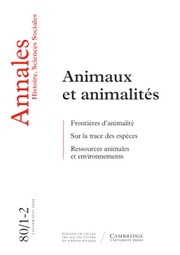Article contents
Conflits sociaux et fluctuations économiques en URSS : l'exemple de la période 1950-1965
Published online by Cambridge University Press: 26 July 2017
Extract
L'économie occupe une place importante dans les études historiques consacrées à l'URSS. Sans doute est-ce dû à la fois au « projet » soviétique et au fait que l'histoire de l'URSS a été celle du passage d'une économie agricole à une économie industrielle. Aussi n'est-il pas surprenant qu'elle soit un lieu de rencontre privilégié pour historiens et économistes.
Pourtant cette approche pluridisciplinaire se fait souvent dans un cadre particulier : celui de la soumission des évolutions économiques aux décisions d'une direction politique, parfois collective, souvent réduite à un individu. Faut-il préciser que si l'économie soviétique était une « économie obéissante », elle ne saurait intéresser l'économiste. Si les fluctuations y sont le pur reflet des tempêtes politiques et idéologiques, alors cédons la place à des disciplines plus compétentes. Travailler sur l'URSS, pour un économiste, implique ce postulat : les mouvements de l'économie soviétique sont, pour une part au moins, autonomes à l'égard du monde politique.
Summary
The Soviet economy is aquainted with regular fluctuations touching at the same time investment and employment as well as such financial factors as credit and savings. These fluctuations are related. They are the manifestation of a cycle which one encounters in those economies reputed to be socialist functioning along the lines of the Soviet model. The behaviour of the different social groups (laborers, peasants, whitecollar workers) and the conflicts which develop are the cause of these movements which present a definite analogy with those experienced by the German war economy of 1916-1918.
- Type
- Histoire de L'URSS
- Information
- Copyright
- Copyright © École des hautes études en sciences sociales Paris 1985
References
Bibliographie
- 1
- Cited by


